Catalog Ads for high-end and luxury brands
October 14, 2024
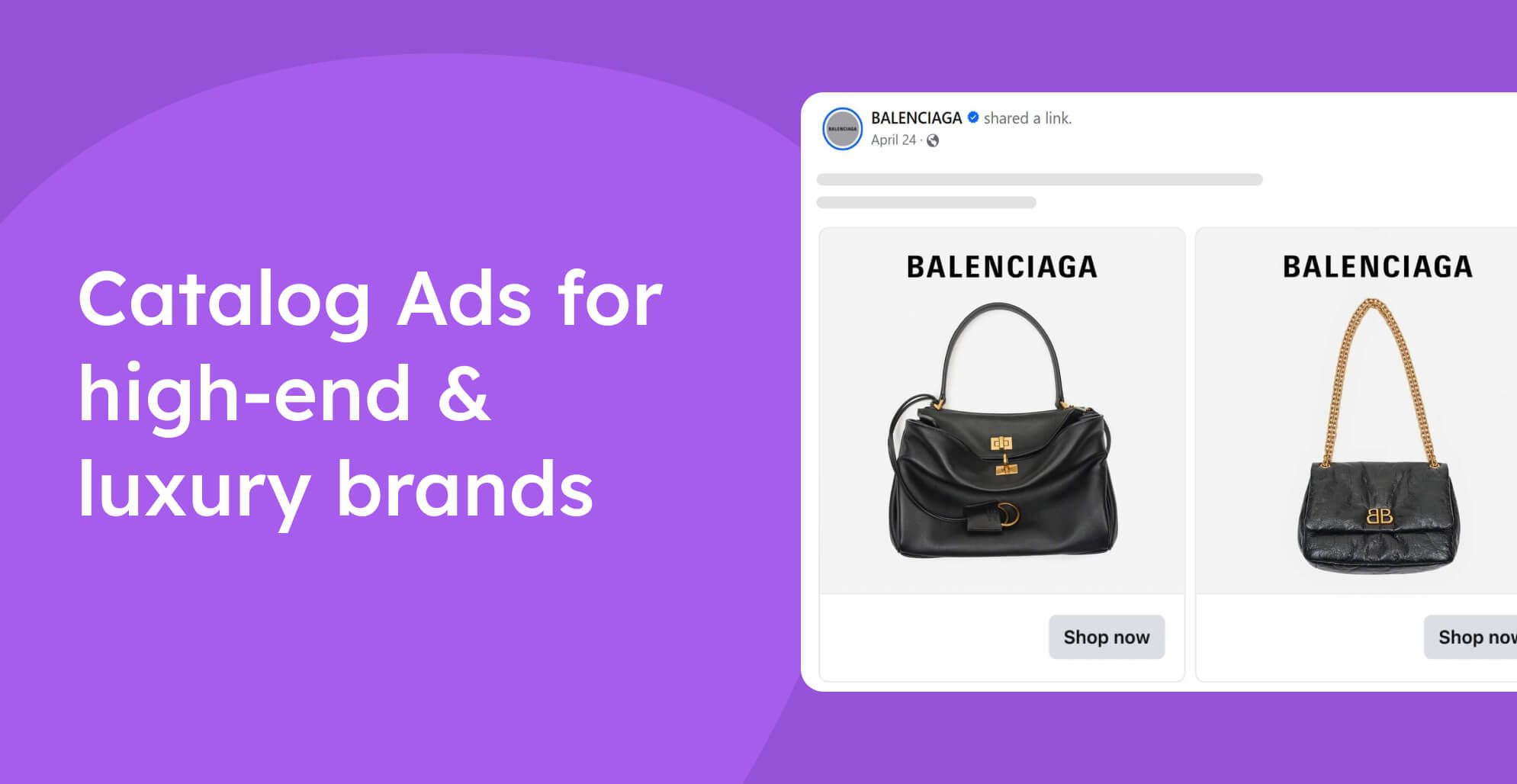
Marketing luxury products isn’t just about showing off what you sell. It’s about creating a feeling. When someone browses your collection or visits your website, they’ve stepped into your brand’s universe.
From that moment on, every touchpoint should reflect the same exclusivity and care, retargeting included.
But here’s the thing: luxury customers expect more than the usual ads they scroll past every day. Your ads need to feel premium, thoughtful, and on-brand; otherwise, you risk cheapening the experience.
Bookmark this page by pressing ctrl + D / cmd + D, or by clicking the star icon in your URL bar ⭐️.
Every little detail counts: should you show the price or leave it out? Does adding your logo make it feel more exclusive or more cluttered? Should you highlight discounts, or would that hurt your high-end vibe?
In this article, we’ll break down the creative choices you can make when designing Catalog Ads for luxury and high-end brands. We’ll explore how elements like prices, logos, product names, and discounts affect how your brand is perceived—so you can design ads that protect your brand’s value and exclusivity, while still driving results.
Here you have the insights in a quick cheat sheet - click to get more details:
The most used product fields in Catalog Ads designs:
The moderately used product fields in Catalog Ads designs:
The rarely used product fields in Catalog Ads designs:
We’re not just throwing a bunch of ideas at you. Each one comes with its own purpose. We’ll walk you through why it works and when to use it, so you can craft ads that actually connect with shoppers who are already close to making a purchase.
Ready? Let’s dive in!
Showing Prices in your Catalog Ads
When you're selling high-end or luxury products, showing the price in your Catalog Ads can be a bit of a balancing act. On one hand, being upfront about cost builds trust and transparency—something even luxury shoppers appreciate.
In fact, luxury brands that display prices still see a solid +35% boost in return on ad spend, even though their audience may be less price-sensitive. But on the flip side, including the price can remove some of the mystique that draws people into luxury brands in the first place.
The more affordable your products are, the better performance you will typically see showing prices.
- Affordable shops see a +60% improvement in Return on Ad Spend when showing prices
- Mid-end shops see a +43% improvement in Return on Ad Spend when showing prices
- High-end/ Luxury shops see a +35% improvement in Return on Ad Spend when showing prices
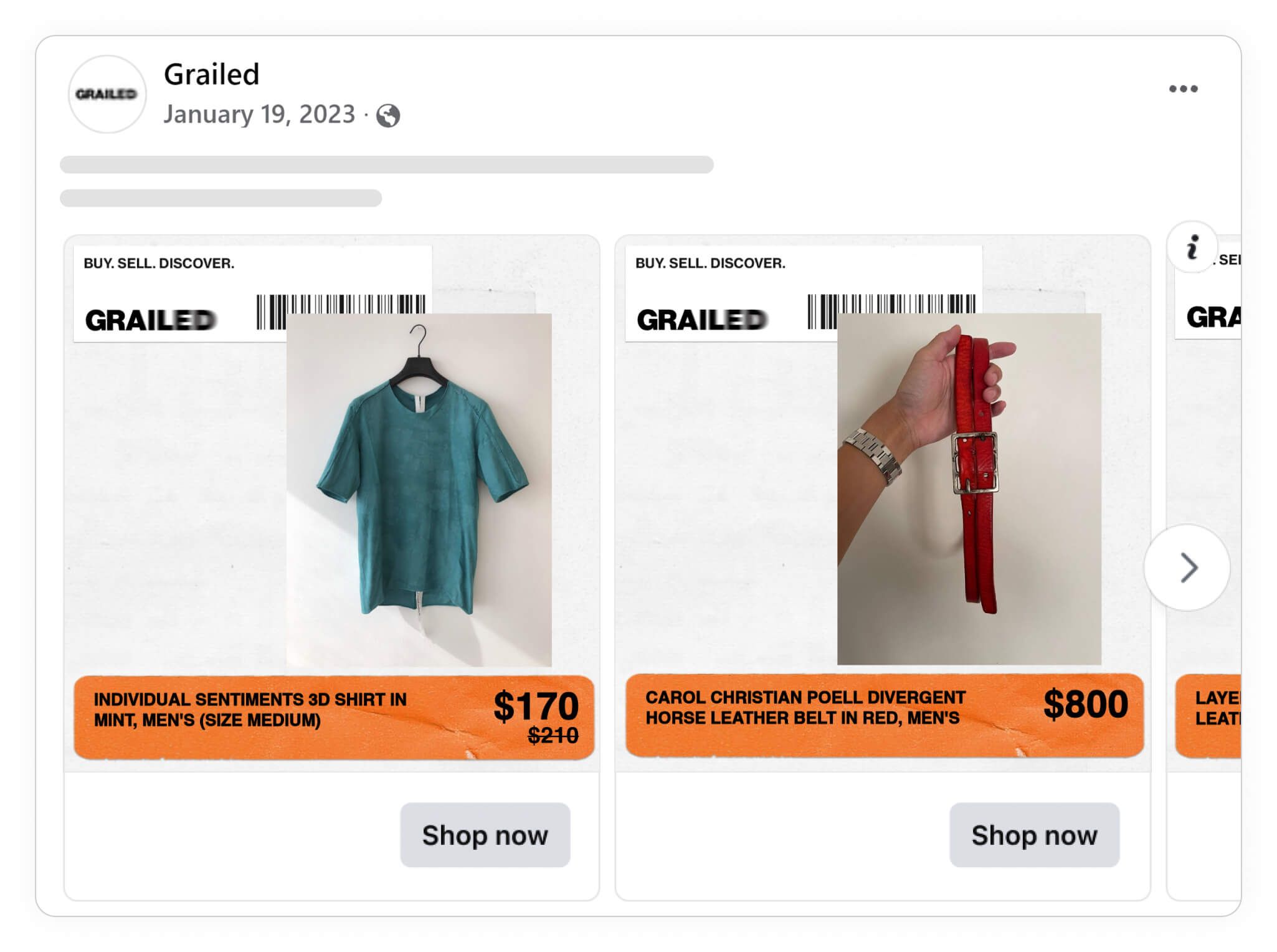
Shoppers who are already familiar with your brand and products - those who’ve visited your website, browsed your collection, or added items to their cart - are typically the best audience for testing prices in your Catalog Ads.
For these customers, displaying the price provides the clarity they need to make a purchase, while naturally filtering out less serious shoppers.
Although brands see a +35% boost in ROAS from showing prices across the funnel, retargeting audiences are usually where advertisers see the strongest results. If your product pricing isn’t meant to be public - or follows a “get a quote” model, you might benefit from keeping prices hidden. Otherwise, showing the price at this stage can be an effective way to nudge interested shoppers closer to conversion.
Ultimately, it depends on your audience and positioning. Test both approaches to see what sparks more engagement and conversions without sacrificing your luxury appeal.
Here's how showing prices on average influence Catalog Ads:
Return On Ad Spend
+35%
Cost Per Purchase
-3%
Click Through Rate
-6%
Cost Per Click
-16%
Conversion Rate
-10%
Usage
41%
These numbers show how Catalog Ads showing prices perform on average compared to Catalog Ads not showing prices.
Remember that these are average numbers. For some brands, prices perform better, and for other brands, prices perform worse.
You can learn more about showing prices in your Catalog Ads right here.
Showing your Logo in Catalog Ads
Luxury is as much about the brand as it is about the product. That’s why showing your logo in Catalog Ads can help reinforce brand recognition and trust two key drivers of luxury purchases. Interestingly, the data shows mixed results: while logos don’t really affect click-through rates (+0%), they do help lower cost per click (-16%) and slightly improve conversion rates (+2%).
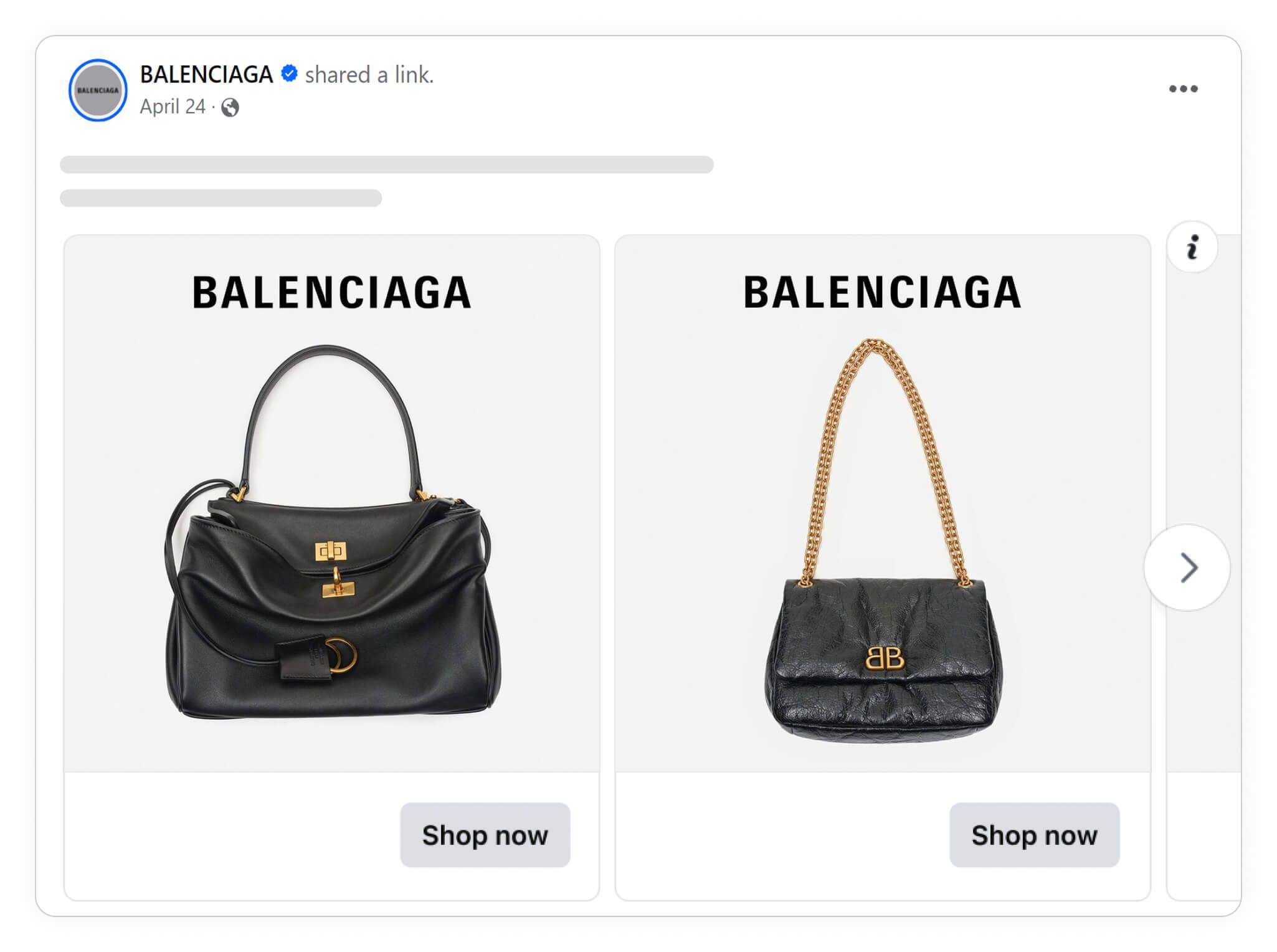
Why? Because when someone’s close to buying, seeing your logo reminds them they’re buying from you: a trusted, high-end brand they’ve already engaged with. It adds a subtle layer of reassurance without needing to say much.
That said, logos can also take up valuable design space. If you’re already working with minimal, elegant visuals (as many luxury brands do), adding a logo might clutter the aesthetic or distract from the product itself.
A good rule of thumb: keep it small, tasteful, and aligned with your overall ad design. Let the product shine, but don’t be afraid to quietly remind them who’s behind it.
Here's how showing your logo on average influence Catalog Ads:
Return On Ad Spend
-5%
Cost Per Purchase
-23%
Click Through Rate
+0%
Cost Per Click
-16%
Conversion Rate
+2%
Usage
47%
These numbers show how Catalog Ads showing the logo of the advertiser perform on average compared to Catalog Ads not showing the logo.
Remember that these are average numbers. For some brands, their logo perform better, and for other brands, their logo perform worse.
You can learn more about showing logos in your Catalog Ads right here.
Showing On-sale designs in your Catalog Ads
If you’re a luxury brand, sales are a delicate dance. On one hand, everyone loves a deal. On the other, too much focus on discounts can cheapen the brand perception you’ve worked so hard to build.
The lower prices you have, the better on-sale designs will typically perform.
- Affordable shops see a +97% improvement in Return on Ad Spend when showing on-sale designs
- Mid-end shops see a +48% improvement in Return on Ad Spend when showing on-sale designs
- High-end/ Luxury shops see a +25% improvement in Return on Ad Spend when showing on-sale designs
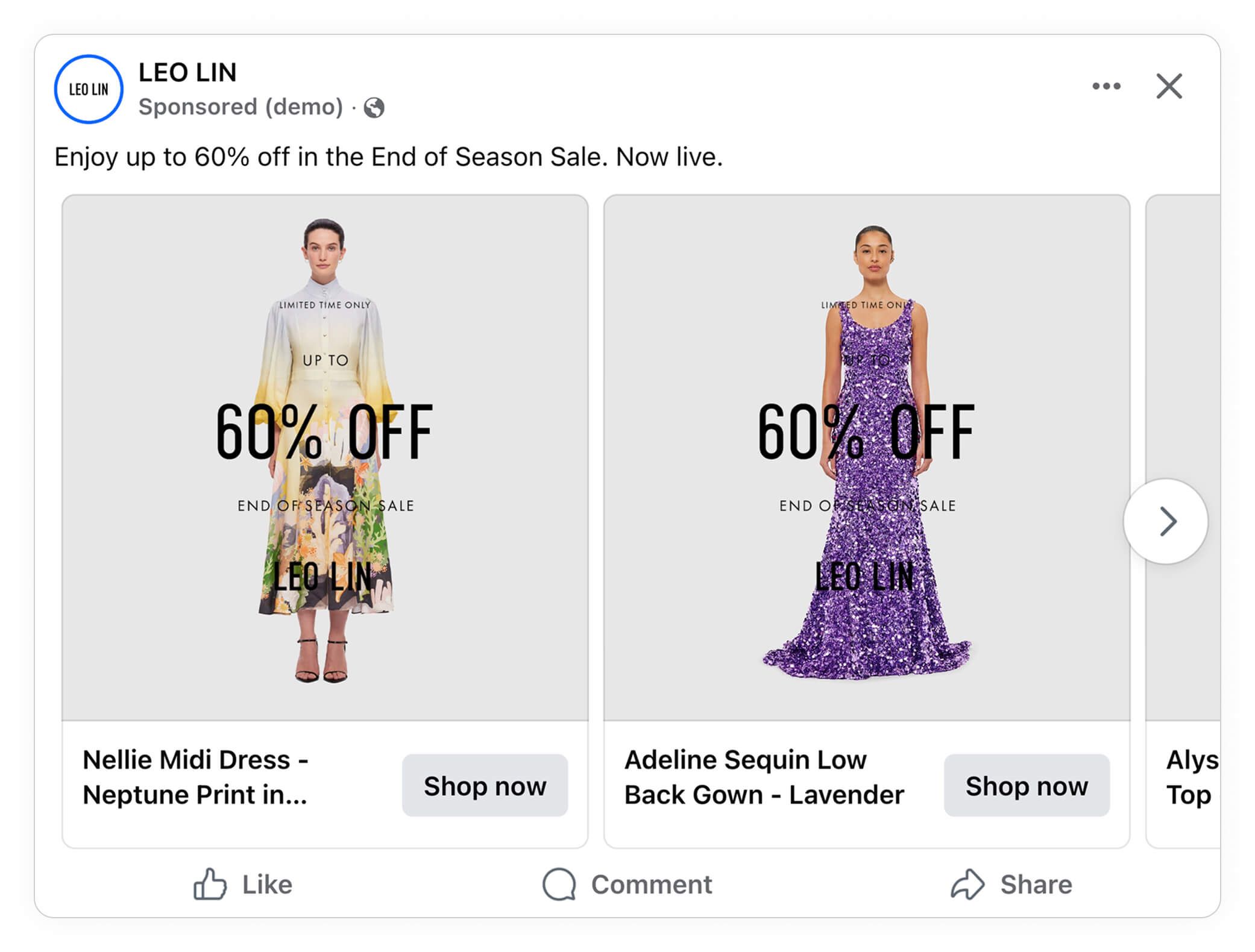
That’s why it’s interesting to see that while on-sale designs boost Return on Ad Spend (+25%) and click-through rates (+23%) for high-end brands, they also come with a dip in conversion rates (-20%). Translation? Sale messaging gets attention, but it might attract more window shoppers than serious buyers.
Still, showing sale designs in your Catalog Ads can be a smart move when used intentionally. Think exclusive seasonal sales, private offers, or limited-time promotions. Framing a discount as a rare opportunity (rather than a constant markdown) helps maintain your luxury positioning while tapping into that sense of urgency.
Just like with logos, subtlety is key. Avoid big, bold “SALE” banners that scream bargain bin. Instead, opt for refined sale markers that feel aligned with your brand’s aesthetic, and with the elevated experience your customers expect.
Here's how showing on-sale designs on average influence Catalog Ads:
Return On Ad Spend
+25%
Cost Per Purchase
-18%
Click Through Rate
+23%
Cost Per Click
-36%
Conversion Rate
-20%
Usage
27%
These numbers show how Catalog Ads showing on-sale designs perform on average compared to Catalog Ads not showing on-sale designs.
Remember that these are average numbers. For some brands, on-sale designs perform better, and for other brands, on-sale designs perform worse.
You can learn more about showing on-sale designs during campaigns in your Catalog Ads right here and see a lot of sales and campaign Catalog Ad examples here.
Showing Product Names in your Catalog Ads
When you’re selling high-end products, the name itself often carries weight. Whether it’s an iconic handbag or a signature fragrance, including the product name in your Catalog Ad can add an extra layer of recognition (and prestige!).
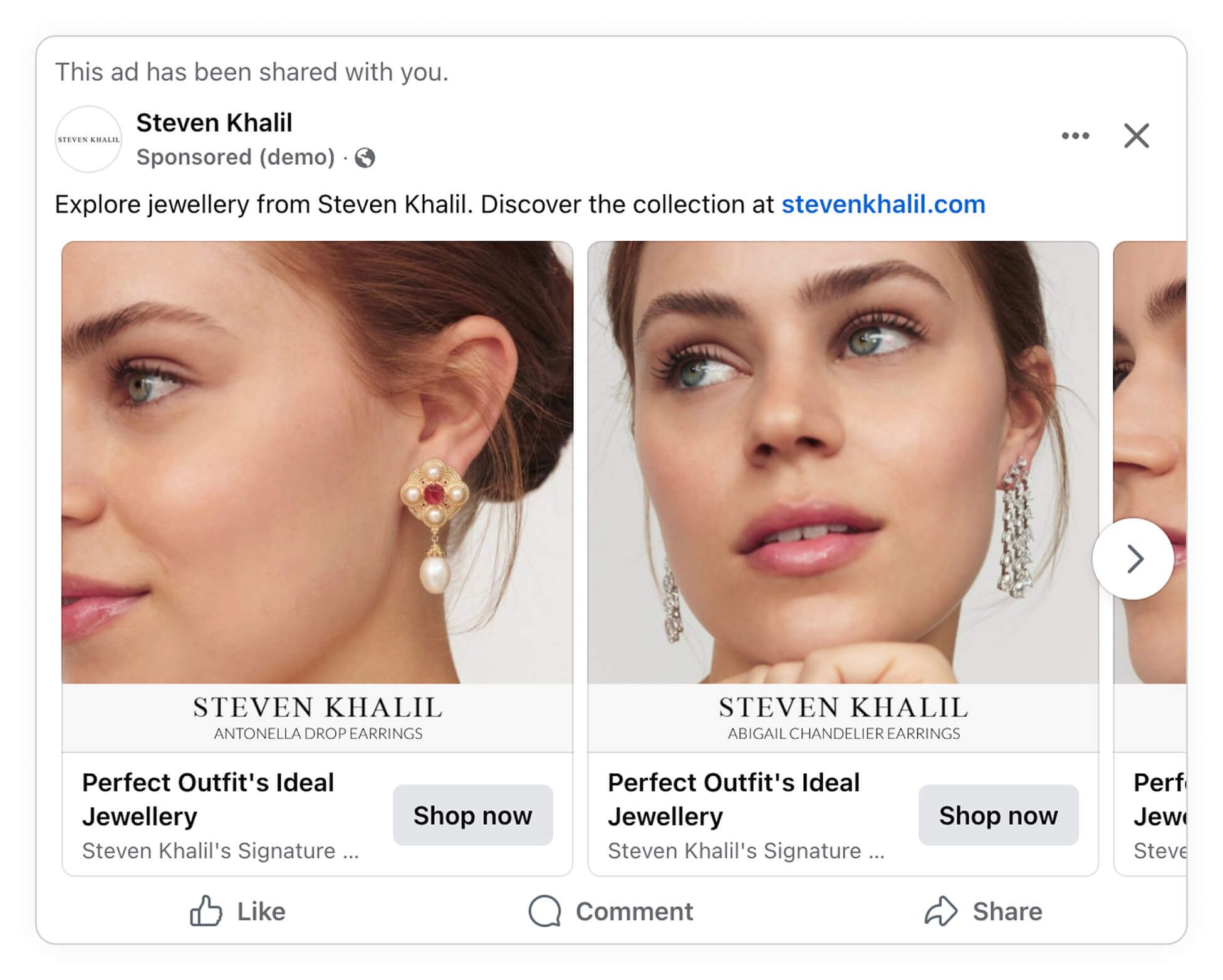
The numbers back it up: showing product names delivers a +28% boost in Return on Ad Spend and lowers cost per purchase by 17%. While it doesn’t have a major effect on click-through or conversion rates, it helps ensure the right people are clicking (the ones searching for that specific item or collection).
For luxury brands, this works especially well for products with strong name recognition or cult status. But it’s not just about slapping a label on the image. How you display the name matters. Keep it sleek, legible, and in line with your brand’s aesthetic. Avoid crowding the design with extra text or flashy fonts that dilute the luxury feel.
Sometimes, less really is more; and letting the product name speak for itself is part of the allure.
Here's how showing product names on average influence Catalog Ads:
Return On Ad Spend
+28%
Cost Per Purchase
-17%
Click Through Rate
-2%
Cost Per Click
-10%
Conversion Rate
-1%
Usage
40%
These numbers show how Catalog Ads showing product names perform on average compared to Catalog Ads not showing product names.
Remember that these are average numbers. For some brands, product names perform better, and for other brands, product names perform worse.
You can learn more about showing product names in your Catalog Ads right here.
Showing Original prices in your Catalog Ads
For luxury shoppers, the original price isn’t just a number; it’s a statement. Showing the original price alongside a discounted one can highlight the value of a deal without diminishing the product’s prestige. It’s a subtle way to say, “This is what it’s worth…and here’s what you’ll pay.”
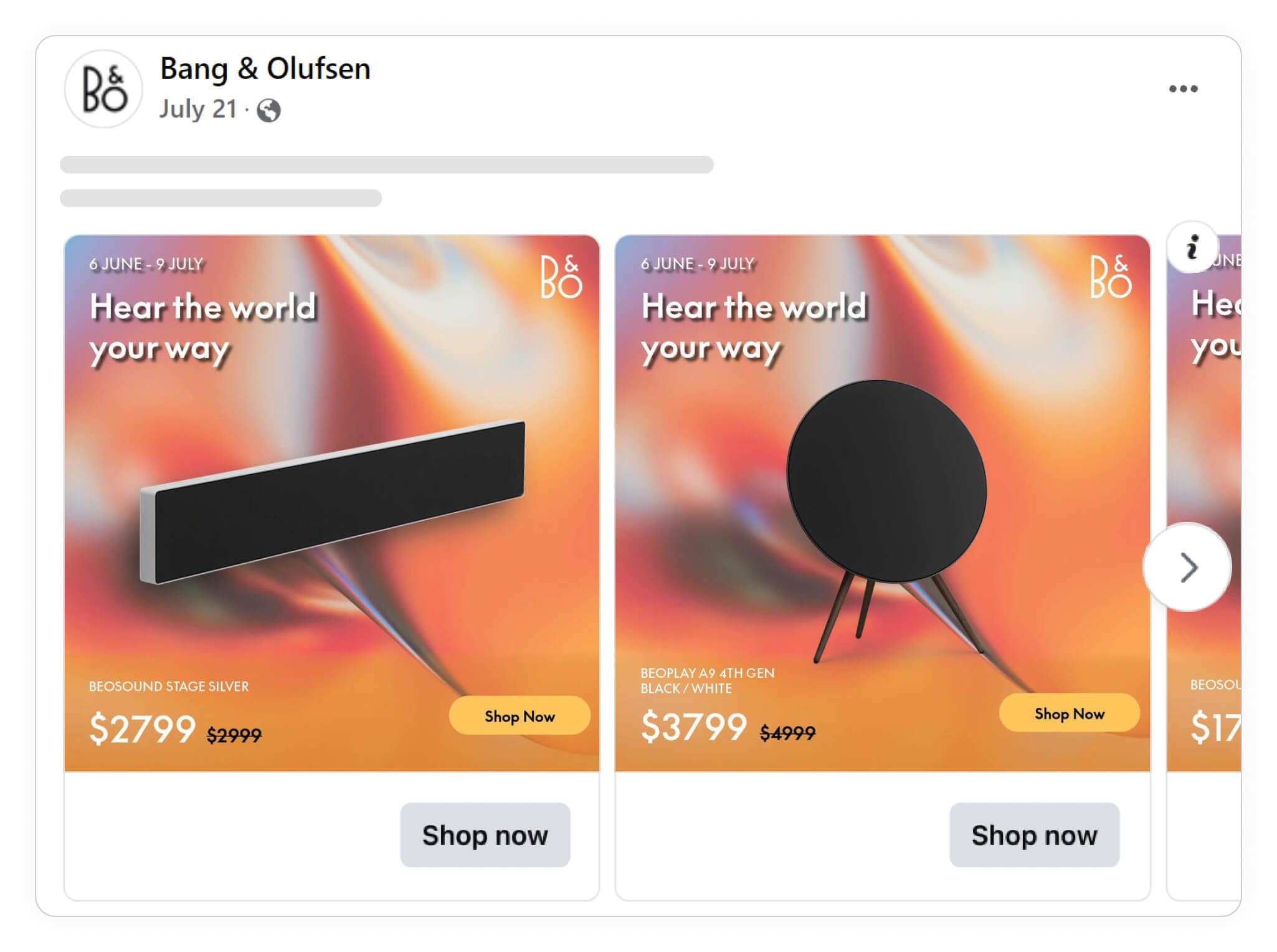
Brands that show original prices see, on average, a +57% increase in Return on Ad Spend and a -15% drop in cost per purchase. It also boosts click-through rates by 17%, suggesting that customers are drawn to the contrast between full price and sale price.
But tread carefully. For high-end brands, flashing markdowns too boldly or too often can risk cheapening the perception of exclusivity. If you choose to show original prices, make sure the presentation aligns with your luxury image: minimal, classy, and intentionally placed.
This works best when discounts are rare or seasonal, reinforcing the idea that shoppers are getting something special, not something perpetually marked down.
Here's how showing original prices on average influence Catalog Ads:
Return On Ad Spend
+57%
Cost Per Purchase
-15%
Click Through Rate
+17%
Cost Per Click
-35%
Conversion Rate
-28%
Usage
17%
These numbers show how Catalog Ads showing original prices perform on average compared to Catalog Ads not showing original prices.
Remember that these are average numbers. For some brands, original prices perform better, and for other brands, original prices perform worse.
You can learn more about showing original prices in your Catalog Ads right here.
Showing additional images in your Catalog Ads
Sometimes, one image just isn’t enough, especially for luxury products where the finer details matter. Showing additional images can give your potential buyers a deeper understanding of your product, highlighting textures, craftsmanship, and unique features that make it worth the investment.
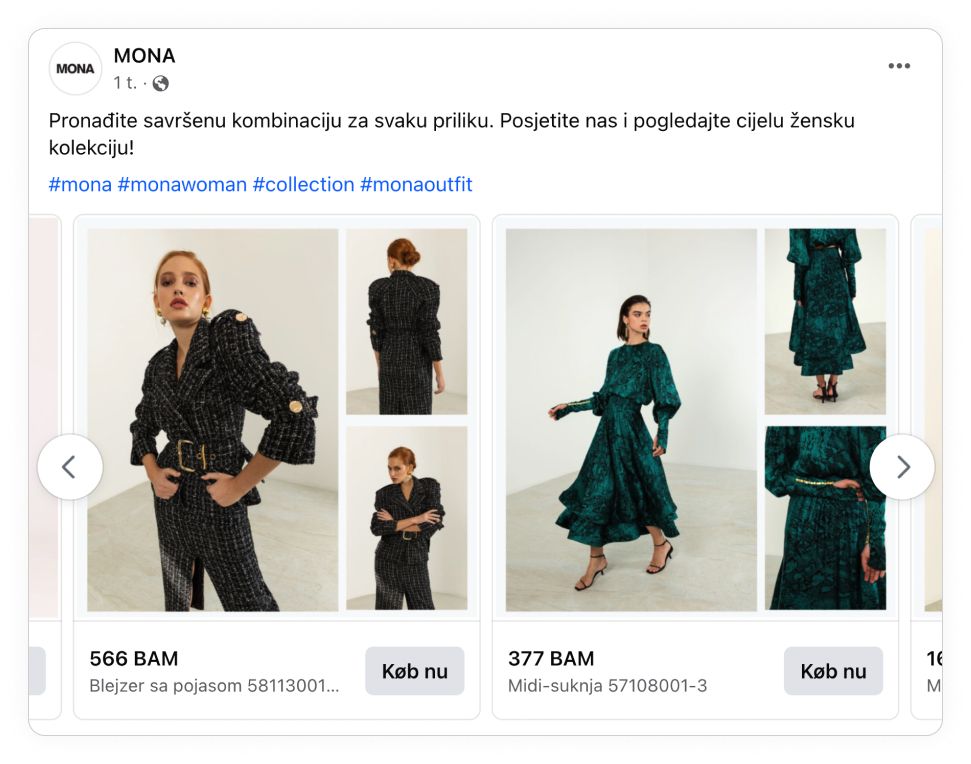
On average, adding extra images to Catalog Ads increases Return on Ad Spend by 4%, but it also boosts click-through rates by 7%, suggesting that customers engage more when they see different angles or lifestyle shots. However, this strategy comes with trade-offs; while clicks may go up, conversions can dip by 23%, meaning some shoppers may click out without purchasing.
Luxury brands should use additional images strategically. Instead of bombarding customers with too many photos, choose ones that showcase the product’s elegance, craftsmanship, and exclusivity. Think of it as offering a closer look into the luxury experience, not just showing more for the sake of it.
As always, test and find the right balance for your brand.
Here's how showing additional images on average influence Catalog Ads:
Return On Ad Spend
+4%
Cost Per Purchase
+10%
Click Through Rate
+7%
Cost Per Click
-13%
Conversion Rate
-23%
Usage
29%
These numbers show how Catalog Ads showing additional images perform on average compared to Catalog Ads not showing additional images.
Remember that these are average numbers. For some brands, additional images perform better, and for other brands, additional images perform worse.
You can learn more about showing additional images in your Catalog Ads right here.
Showing Savings and Discounts in your Catalog Ads
Discounts and savings are a significant motivator, but when it comes to luxury brands, they can be a double-edged sword. While affordable shops see massive boosts from displaying discounts (+115% ROAS), high-end and luxury brands only see a +24% improvement on average. That’s because discounts in this space can sometimes reduce perceived value, especially if shoppers associate them with lower quality or exclusivity.
The more affordable prices you have, the better savings and discounts typically perform in your Catalog Ads.
- Affordable shops see a +115% improvement in Return on Ad Spend when showing savings and discounts
- Mid-end shops see a +73% improvement in Return on Ad Spend when showing savings and discounts
- High-end/ Luxury shops see a +24% improvement in Return on Ad Spend when showing savings and discounts
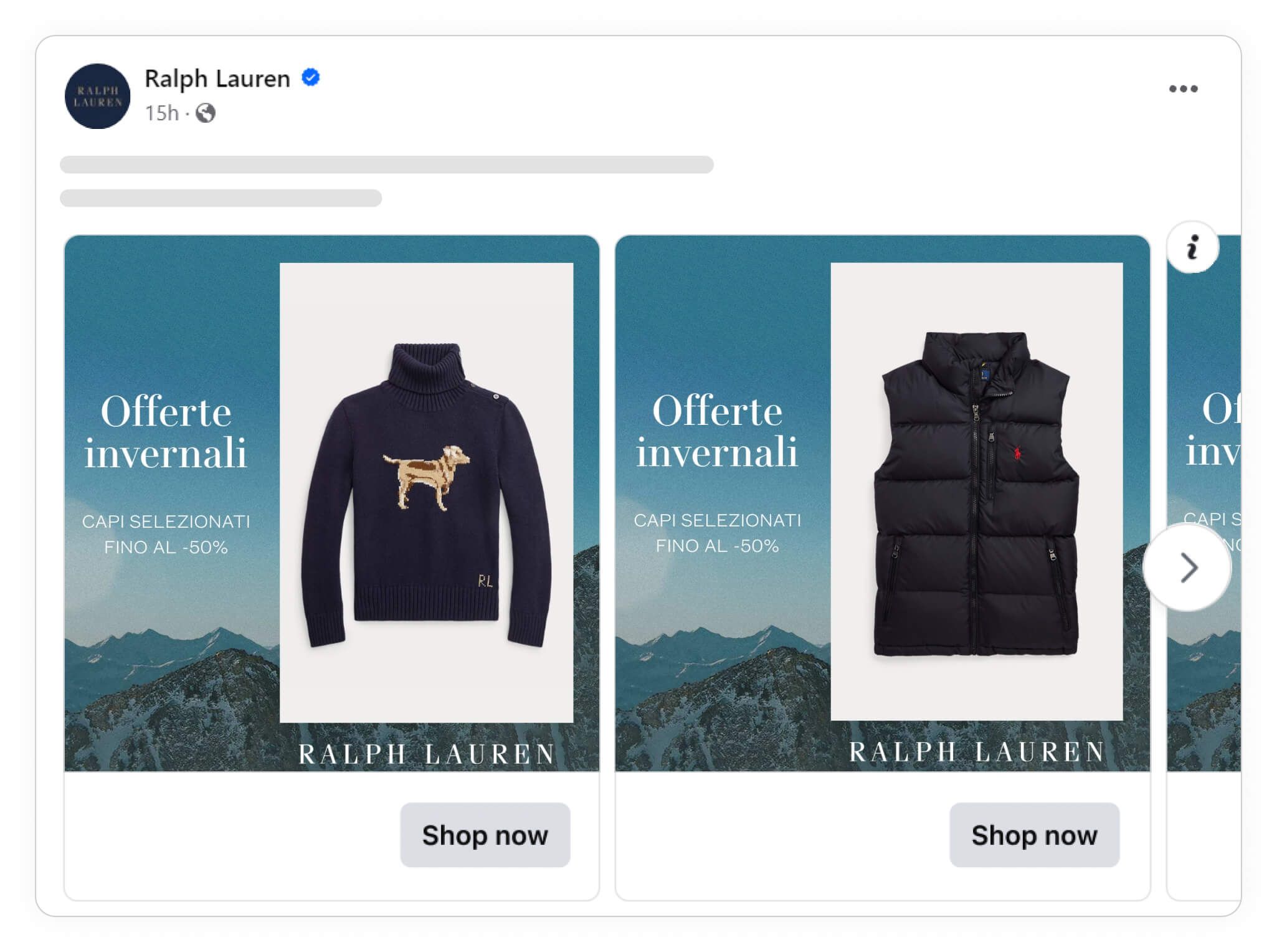
However, when used strategically, savings can still be effective. Luxury brands can showcase limited-time offers, exclusive VIP discounts, or seasonal promotions to create urgency without diluting the brand’s luxury feel. The key is to ensure that the discount doesn’t overshadow the quality of the product itself.
While showing savings may drive clicks (+30% CTR), it may also lower conversion rates (-15%) and increase cost per purchase (-8%). This is why it’s essential to approach discounts thoughtfully and test different ways to find the sweet spot for your audience.
Here's how showing savings on average influence Catalog Ads:
Return On Ad Spend
+24%
Cost Per Purchase
-8%
Click Through Rate
+30%
Cost Per Click
-33%
Conversion Rate
-15%
Usage
15%
These numbers show how Catalog Ads showing savings perform on average compared to Catalog Ads not showing savings.
Remember that these are average numbers. For some brands, savings perform better, and for other brands, savings perform worse.
You can learn more about showing savings during campaigns in your Catalog Ads right here and see a lot of sales and campaign Catalog Ad examples here.
Showing Dates in your Catalog Ads
Including dates in your Catalog Ads can be beneficial for time-sensitive promotions, but it doesn’t always work in your favor, especially in the luxury space. Dates can create urgency, but you’ll want to use them carefully, as showing dates typically has a mixed effect on performance. On average, showing dates results in a -4% drop in ROAS and a -23% decline in CTR.
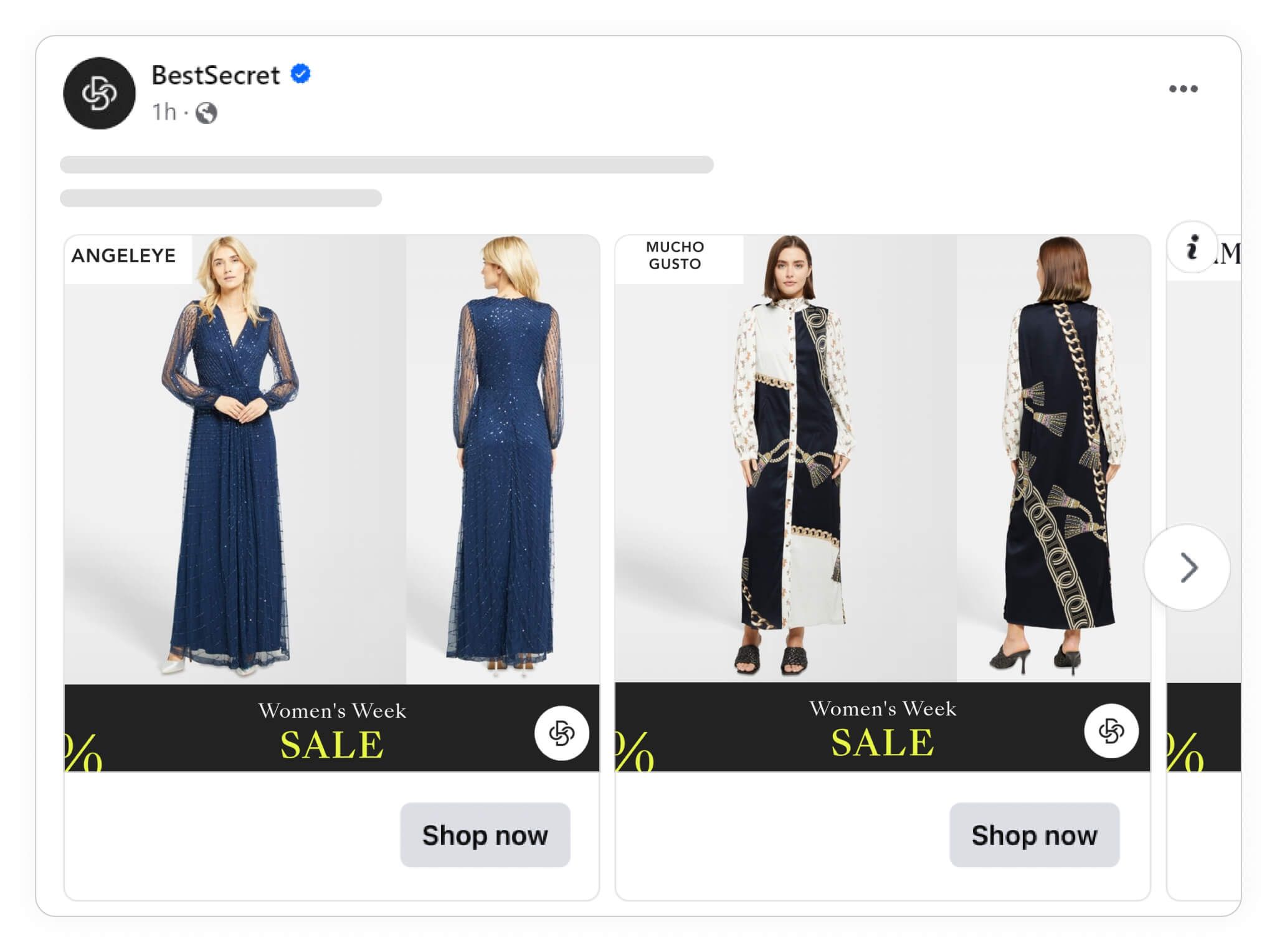
Showing dates may not always align with a luxury brand’s premium positioning. Shoppers expect timeless quality, and a focus on limited-time offers or deadlines can risk undermining that perception. However, when used to highlight exclusive events, limited-edition releases, or VIP access, dates can still add value. For example, limited-time discounts on high-end products might be appropriate for seasonal promotions or special collaborations.
While showing dates may reduce CTR and ROAS, it can drive conversions (+42%) when the offer is relevant and well-aligned with your luxury brand’s messaging.
Here's how showing dates on average influence Catalog Ads:
Return On Ad Spend
-4%
Cost Per Purchase
-15%
Click Through Rate
-23%
Cost Per Click
+40%
Conversion Rate
+42%
Usage
13%
These numbers show how Catalog Ads showing dates perform on average compared to Catalog Ads not showing dates.
Remember that these are average numbers. For some brands, dates perform better, and for other brands, dates perform worse.
You can learn more about showing urgency in your Catalog Ads right here.
Highlighting News in your Catalog Ads
Highlighting news in your Catalog Ads is a powerful way to tap into the excitement luxury shoppers feel around new collections, product drops, or exclusive releases. It’s one of the simplest ways to boost engagement, yet only 14% of brands use it—making it a surprisingly underused strategy in luxury advertising.
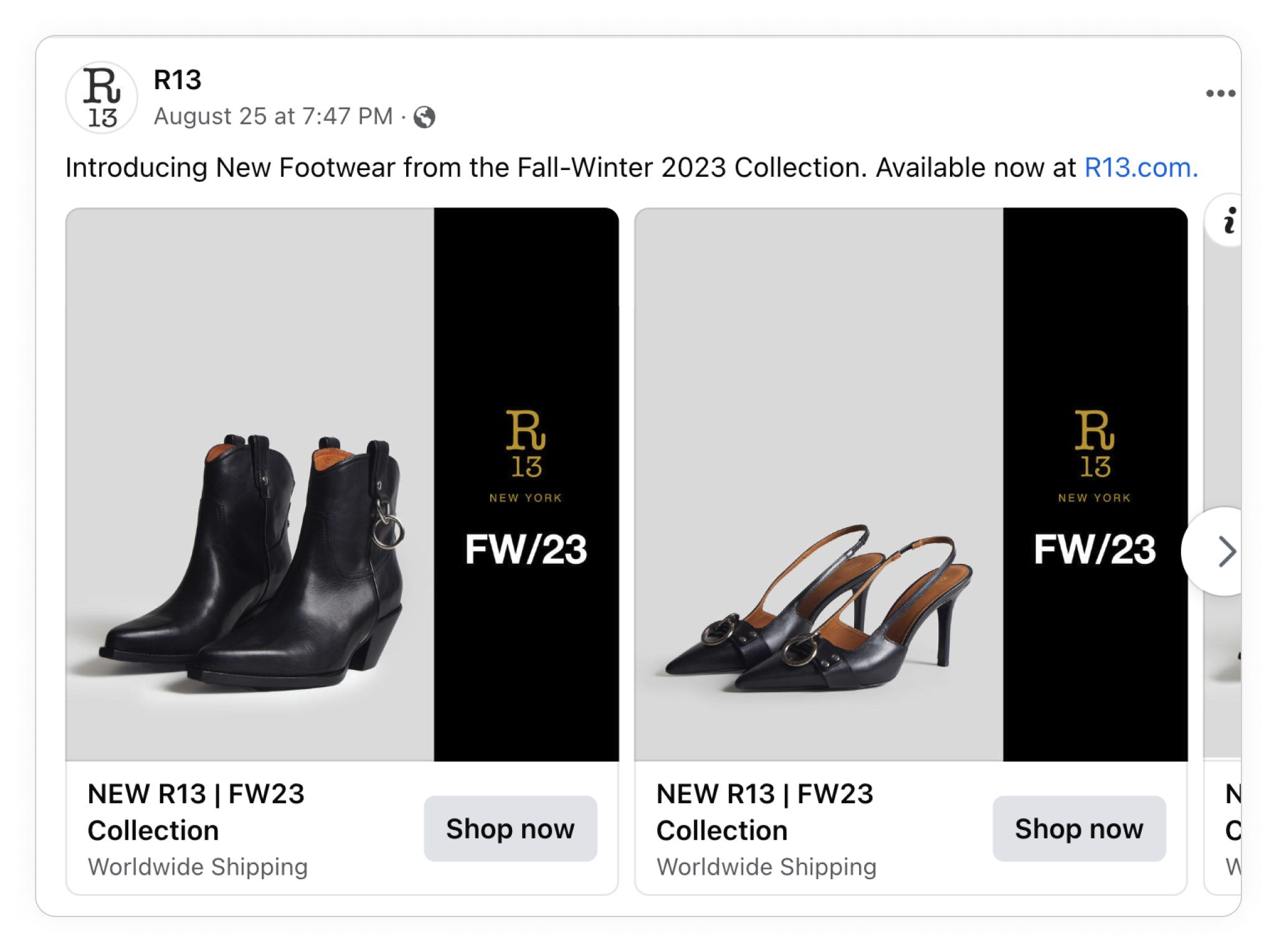
When brands showcase news in their Catalog Ads, they see impressive results: a +31% increase in ROAS, a +28% boost in click-through rates, and a lower cost per click (-13%). This shows that customers aren’t just clicking to browse, they’re actually following through and buying.
Why does it work so well? Luxury shoppers are naturally drawn to “what’s new.” Announcing fresh products or collaborations gives them a reason to click, explore, and act now.
By tying your ads to meaningful news, you’re not just promoting products, you’re giving customers a reason to engage with your brand in the moment.
Just make sure the news you highlight aligns with your brand’s values and feels truly exciting. If it’s forced or irrelevant, it can fall flat.
Here's how highlighting news on average influence Catalog Ads:
Return On Ad Spend
+31%
Cost Per Purchase
-8%
Click Through Rate
+28%
Cost Per Click
-28%
Conversion Rate
-27%
Usage
14%
These numbers show how Catalog Ads highlighting news perform on average compared to Catalog Ads not highlighting news.
Remember that these are average numbers. For some brands, highlighting news perform better, and for other brands, highlighting news perform worse.
You can learn more about highlighting news in your Catalog Ads right here.
Showing Shipping info in your Catalog Ads
Shipping info might seem like a small detail, but it can play a big role in your customer’s decision to buy. For high-end shoppers, knowing how and when their order will arrive builds trust and confidence. But, as with most elements in your Catalog Ads, it comes with its pros and cons.
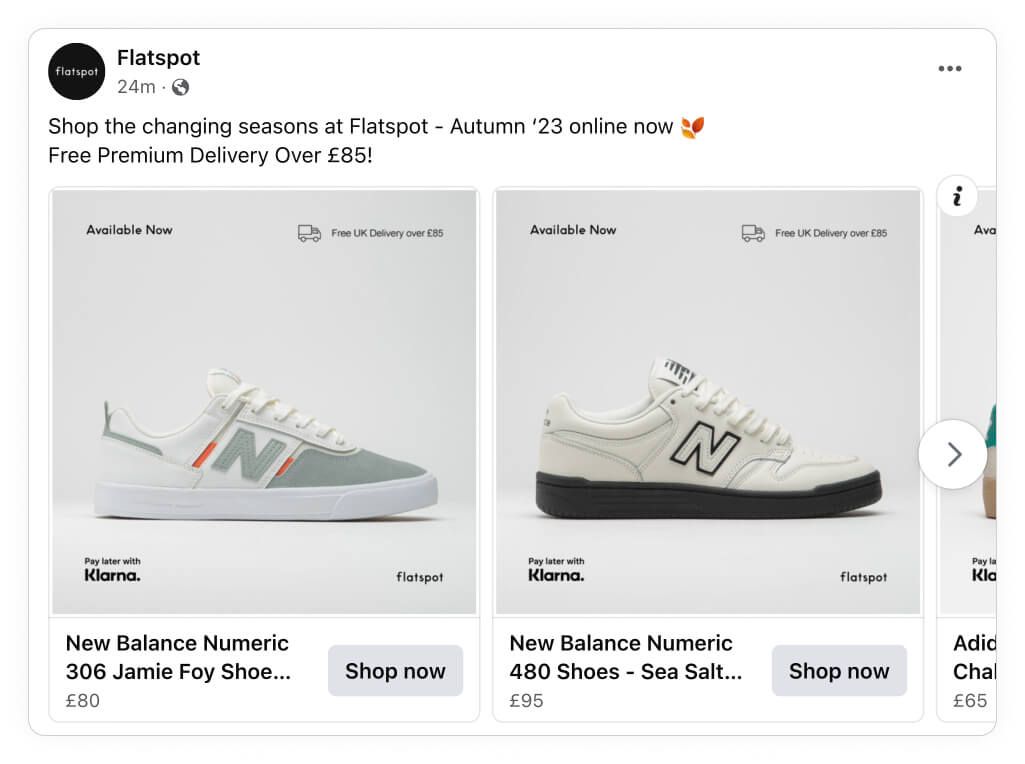
On average, showing shipping information in Catalog Ads leads to a -34% drop in ROAS and a -21% increase in cost per purchase, meaning customers may be less likely to convert when faced with this information upfront. But here's the twist: conversion rates actually go up by +62%. Why? Because customers who are already familiar with your products want transparency and clarity, especially when it comes to delivery costs and timelines.
If you’re considering this, focus on keeping the shipping info clear and simple. Too much detail can overwhelm the shopper, but offering free or fast shipping as a key selling point can help turn this information into a positive influence on conversions.
Here's how showing shipping info on average influence Catalog Ads:
Return On Ad Spend
-34%
Cost Per Purchase
-21%
Click Through Rate
-14%
Cost Per Click
+17%
Conversion Rate
+62%
Usage
8%
These numbers show how Catalog Ads showing shipping information perform on average compared to Catalog Ads not showing shipping information.
Remember that these are average numbers. For some brands, shipping info perform better, and for other brands, shipping info perform worse.
Using Product Assets in your Catalog Ads
Product Assets are a helpful tool for showcasing your products in Catalog Ads, but they don't always work for every brand. For mid-end shops (those that fall between luxury and affordable pricing) product assets can really boost performance, driving up ROAS by +75%. This makes sense: Mid-range products benefit from high-quality visuals, detailed descriptions, or interactive elements that showcase their value.
Product Assets are especially effective for mid-end shops that don't rely on luxury products or very affordable products.
- Affordable shops see a +12% improvement in Return on Ad Spend when showing Product Assets
- Mid-end shops see a +75% improvement in Return on Ad Spend when showing Product Assets
- High-end/ Luxury shops see a -17% decline in Return on Ad Spend on average when showing Product Assets
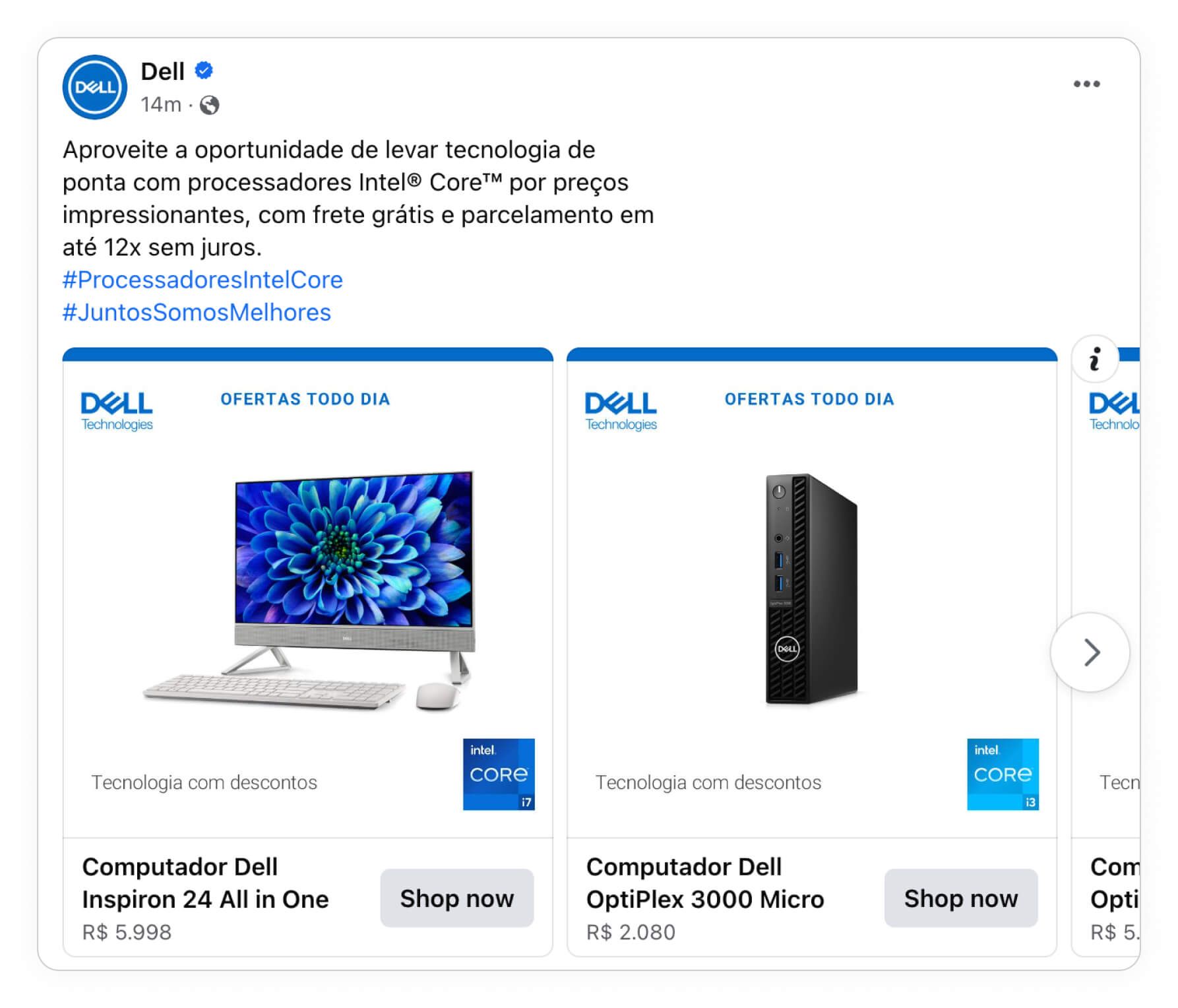
However, for high-end and luxury brands, using product assets in Catalog Ads can actually result in a -17% decrease in ROAS. Luxury shoppers often prefer minimalism and exclusivity, so adding too much detail can dilute the allure. For affordable brands, product assets still have a positive effect, with a +12% boost in ROAS.
When using product assets, it’s important to strike a balance. The visuals and information should enhance your product's appeal without overwhelming the viewer. If your product assets are too busy or misaligned with your brand image, they may not drive the results you're hoping for.
Here's how showing product assets on average influence Catalog Ads:
Return On Ad Spend
-17%
Cost Per Purchase
+4%
Click Through Rate
-28%
Cost Per Click
+81%
Conversion Rate
+125%
Usage
4%
These numbers show how Catalog Ads showing product assets perform on average compared to Catalog Ads not showing product assets.
Remember that these are average numbers. For some brands, product assets perform better, and for other brands, product assets perform worse.
You can learn more about using Product Assets in your Catalog Ads here.
Showing Social Proof in your Catalog Ads
Showing social proof can be a delicate balancing act for luxury brands. While it can build trust, it’s important to maintain your brand’s premium image.
The lower price levels you have compared to competitors, the better showing Social Proof will typically perform.
- Affordable shops see a +72% improvement in Return on Ad Spend when showing Social proof
- Mid-end shops see a +32% improvement in Return on Ad Spend when showing Social Proof
- High-end/ Luxury shops see a +10% improvement in Return on Ad Spend when showing Social Proof
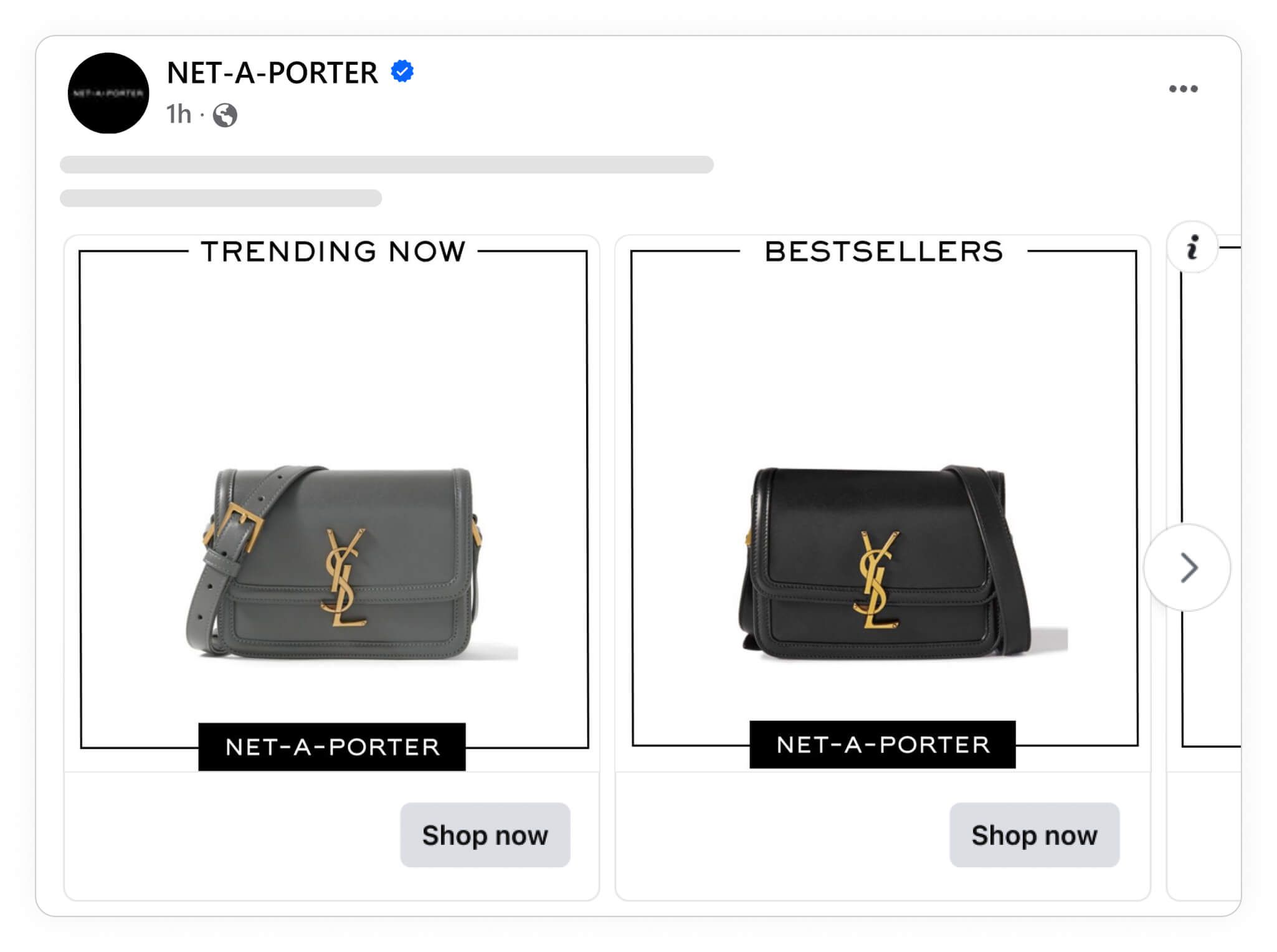
For high-end and luxury shops, social proof sees a more modest influence, with a +10% boost in Return on Ad Spend (ROAS). It’s still effective, but it doesn’t carry the same weight as it does for more affordable products. Mid-end shops see a +32% improvement in ROAS, and affordable shops typically see the highest benefits, with a +72% improvement.
Why does it work? Social proof reassures customers that others trust and value your brand, making them more likely to make a purchase. For luxury products, it’s often about showing that your brand is respected and cherished by those with refined taste. Customer testimonials, influencer endorsements, or showcasing exclusivity can be valuable tools in this case.
However, it’s key not to overdo it. Too much social proof could diminish the luxury feel. Choose high-quality reviews and endorsements that align with your brand’s prestige.
Here's how showing social proof on average influence Catalog Ads:
Return On Ad Spend
+10%
Cost Per Purchase
-30%
Click Through Rate
-27%
Cost Per Click
+5%
Conversion Rate
+53%
Usage
6%
These numbers show how Catalog Ads showing social proof perform on average compared to Catalog Ads not showing social proof.
Remember that these are average numbers. For some brands, social proof perform better, and for other brands, social proof perform worse.
You can learn more about showing Social Proof in Catalog Ads here.
Showing Product Brands in your Catalog Ads
For luxury brands, your brand name is one of your most powerful selling points, and the numbers back it up. Catalog Ads that show the product’s brand name see a +62% improvement in Return on Ad Spend (ROAS) for high-end and luxury shops, making it one of the most influential design choices you can make.
The more high-end and expensive your products are, the better performance you will typically see when showing the brands of your products.
- Affordable shops see a +13% improvement in Return on Ad Spend when showing brands
- Mid-end shops see a +29% improvement in Return on Ad Spend when showing brands
- High-end/ Luxury shops see a +62% improvement in Return on Ad Spend when showing brands
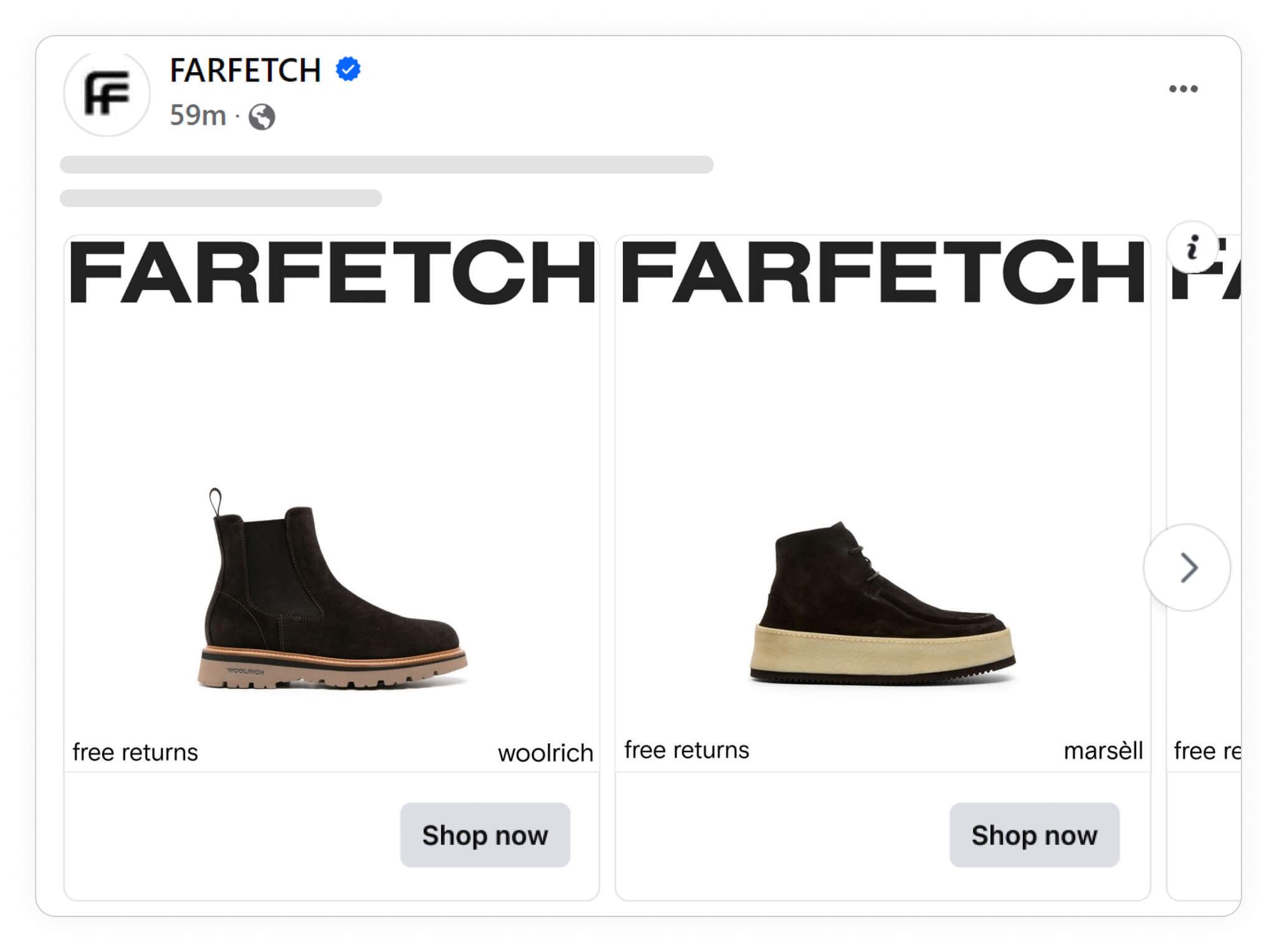
Why does it work so well? The brand itself is a powerful tool in the world of luxury shopping. Customers aren’t just buying a product; they’re buying into a legacy. Highlighting the brand name or logo reinforces that prestige and helps differentiate you from more affordable competitors.
In contrast, mid-end shops see a +29% improvement, while affordable shops see a +13% boost when showing brands. Yet despite this lift, only about 13% of affordable shops actually show the brand name in their ads. It’s a simple, underused tactic that’s driving measurable results.
Clearly, the higher the price point, the more influence the brand name has on customer decisions. Including your brand name or logo in your Catalog Ads can also improve awareness and loyalty over time, especially for shoppers who already admire your brand but haven’t yet made a purchase.
Here's how showing brand names on average influence Catalog Ads:
Return On Ad Spend
+62%
Cost Per Purchase
+8%
Click Through Rate
+33%
Cost Per Click
-40%
Conversion Rate
-42%
Usage
13%
These numbers show how Catalog Ads showing brand names perform on average compared to Catalog Ads not showing brand names.
Remember that these are average numbers. For some retailers, brand names perform better, and for other retailers, brand names perform worse.
You can learn more about showing brand names or brand logos in your Catalog Ads here.
Showing Custom_labels in your Catalog Ads
Custom labels are a subtle but strategic way to categorize and highlight products in your Catalog Ads. For luxury brands, they’re an opportunity to add an extra layer of exclusivity or guide shoppers toward curated collections, limited editions, or special releases.
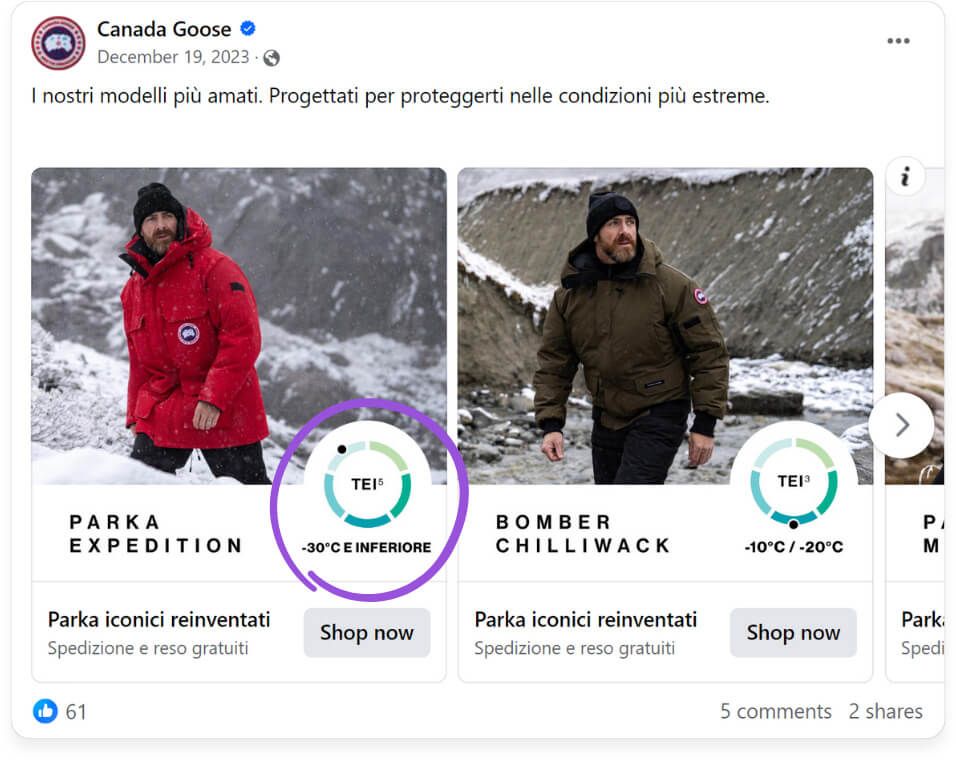
On average, showing custom labels in Catalog Ads increases Return on Ad Spend by +29%, a solid lift, especially when used to showcase high-margin or high-demand products. While there’s a slight increase in cost per purchase (+60%), this reflects the premium nature of the products being promoted rather than inefficiency.
Interestingly, showing custom labels leads to a small dip in click-through rate (-10%) and conversion rate (-13%), but it also lowers the cost per click by -10%. This suggests that while fewer shoppers may click, those who do are more intentional and further along in their purchase journey (exactly the kind of qualified audience luxury brands want to attract).
For high-end retailers, consider using custom labels to spotlight capsule collections, seasonal launches, or VIP-only products to enhance exclusivity and drive higher-value conversions.
Here's how showing custom labels on average influence Catalog Ads:
Return On Ad Spend
+29%
Cost Per Purchase
+60%
Click Through Rate
-10%
Cost Per Click
-10%
Conversion Rate
-13%
Usage
6%
These numbers show how Catalog Ads showing custom labels perform on average compared to Catalog Ads not showing custom labels.
Remember that these are average numbers. For some brands, custom labels perform better, and for other brands, custom labels perform worse.
You can learn more about showing custom labels in your Catalog Ads here.
Showing Categories in your Catalog Ads
When it comes to luxury, broad product categories often take a backseat to the brand story, craftsmanship, or exclusivity of individual pieces. The data backs this up. Showing product categories in Catalog Ads tends to have a negative impact on performance for high-end retailers.
On average, showing categories leads to a -18% decline in Return on Ad Spend and a -66% drop in conversion rate, while also reducing click-through rate by -7%. Even though it lowers cost per click by -37%, this doesn’t offset the weaker engagement and sales outcomes.’
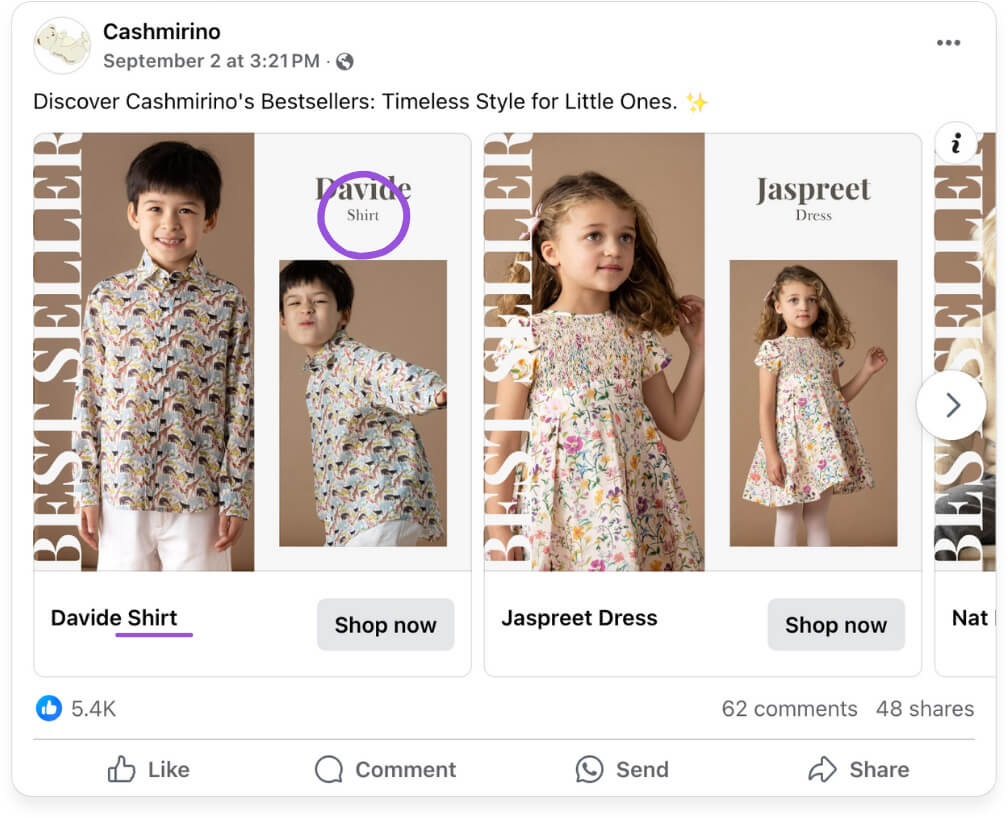
Why? Broad categories like “shoes” or “bags” aren’t as compelling for luxury shoppers as showcasing the unique details, brands, or exclusivity of a product. Instead of generic groupings, luxury audiences respond better to aspirational storytelling, prestige branding, and carefully curated selections.
If you’re a luxury brand, you may want to skip using categories in your Catalog Ads, or use them only in highly tailored campaigns where narrowing by category is essential to the shopper’s intent.
Here's how showing product categories on average influence Catalog Ads:
Return On Ad Spend
-18%
Cost Per Purchase
+8%
Click Through Rate
-7%
Cost Per Click
-37%
Conversion Rate
-66%
Usage
2%
These numbers show how Catalog Ads showing categories perform on average compared to Catalog Ads not showing categories.
Remember that these are average numbers. For some brands, categories perform better, and for other brands, categories perform worse.
You can learn more about showing categories in your Catalog Ads here.
Showing Product Descriptions in Catalog Ads
Every detail matters for luxury brands. But in the fast-paced world of Catalog Ads, adding product descriptions may not always work in your favor. The data shows a +11% increase in Return on Ad Spend, but it comes with tradeoffs: a -35% decrease in click-through rate and a -19% drop in conversion rate.
Why? Luxury shoppers are visually driven. They’re drawn to stunning imagery, brand prestige, and exclusivity, not lengthy descriptions. A product description might dilute the effect of your visuals or clutter the minimalist elegance luxury consumers expect.
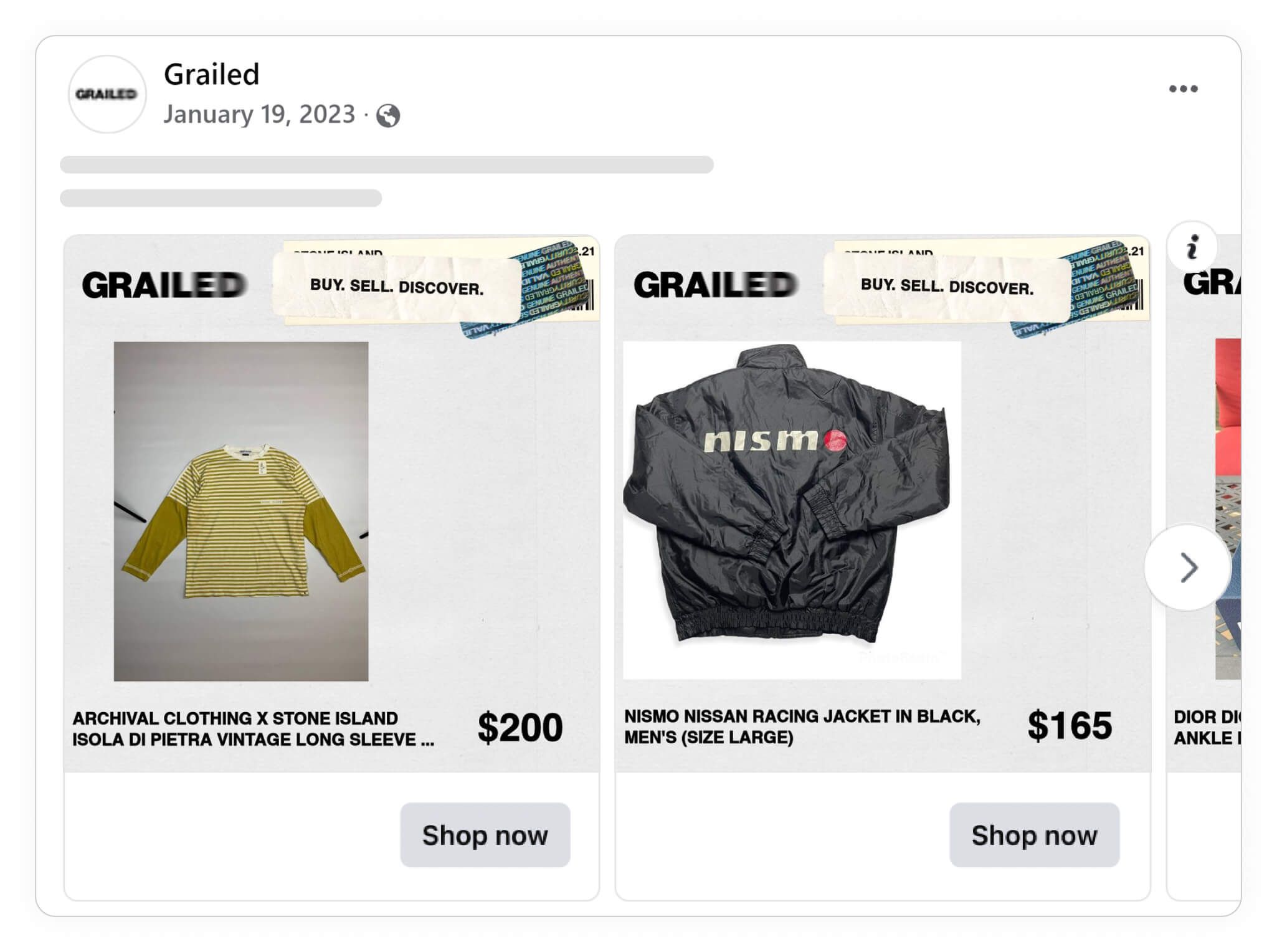
That said, short, carefully crafted descriptions could work in specific cases, especially for highlighting craftsmanship, heritage, or materials that set a product apart. But for most high-end retailers, leading with visuals and brand cues tends to outperform text-heavy designs.
If you choose to include descriptions, keep them succinct, elevated, and aligned with your brand voice to maintain luxury appeal without sacrificing clarity or allure.
Here's how showing descriptions on average influence Catalog Ads:
Return On Ad Spend
+11%
Cost Per Purchase
+14%
Click Through Rate
-35%
Cost Per Click
+16%
Conversion Rate
-19%
Usage
1%
These numbers show how Catalog Ads showing descriptions perform on average compared to Catalog Ads not showing descriptions.
Remember that these are average numbers. For some brands, descriptions perform better, and for other brands, descriptions perform worse.
You can learn more about product descriptions in your Catalog Ads here.
Conclusion
Crafting effective Catalog Ads for luxury shoppers isn’t about following a formula; it’s about making intentional, thoughtful choices that align with your brand’s premium positioning. Every element you add (or leave out) can subtly shape how customers perceive your products, your brand, and the overall experience of buying from you.
Whether you choose to highlight prices, logos, product names, discounts, or news, the key is balance: conveying trust and urgency without sacrificing exclusivity. The data shows that even small tweaks can affect performance, but what works best depends on your audience, your goals, and your unique brand story.
So don’t be afraid to experiment. Test different designs. Find the sweet spot where luxury meets performance. Because when every detail reflects the premium quality you stand for, you’re not just driving conversions; you’re deepening desire, loyalty, and love for your brand.
Bookmark this page by pressing ctrl + D / cmd + D, or by clicking the star icon in your URL bar ⭐️.
